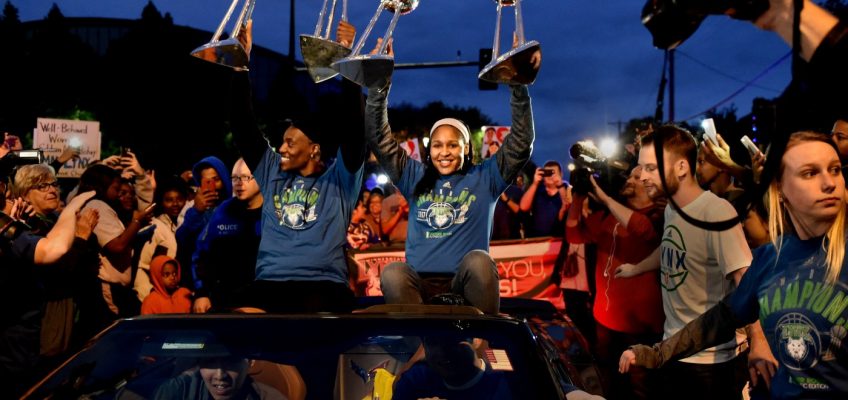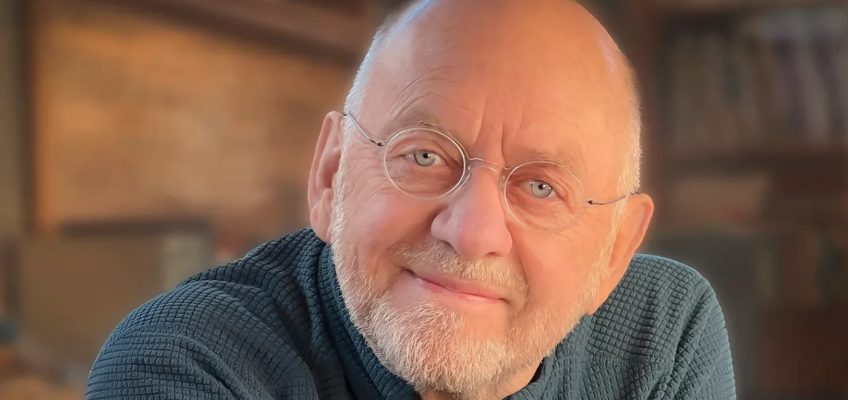A pair of Minnesota Lynx legends are going into the Basketball Hall of Fame later this year.
Sylvia Fowles and Maya Moore were both announced as inductees on Saturday.
Fowles won a pair of titles with Minnesota — in 2015 and 2017. She was Finals MVP in both of those championship-clinching seasons and also was League MVP in 2017. The WNBA’s all-time leading rebounder (4,006) and four-time Olympic gold medalist will also go into the Women’s Basketball Hall of Fame this year.
Moore won four titles with Minnesota (2011, 2013, 2015, 2017), winning Finals MVP in 2013 and League MVP in 2014. Moore won a pair of Olympic golds with Team USA.
“I don’t think (any) one of us go into this thinking that we’re going to be Hall of Famers,” Fowles said. “You just do your job … and when it’s all said and done, the job is complete and here we are.”
On the men’s side, Carmelo Anthony and Dwight Howard will also be inducted, not once but twice. And LeBron James and Chris Paul are part of the group that’s headed to the Hall as well, even before their playing careers end.
Anthony and Howard were announced Saturday as members of the Class of 2025, as was the 2008 U.S. Olympic men’s basketball team that they played on — dubbed the “Redeem Team,” the one that captured gold at the Beijing Games and started a still-going run of five consecutive Olympic titles and counting for USA Basketball’s men’s program.
Also selected for enshrinement: WNBA great Sue Bird, Chicago Bulls coach and two-time NCAA champion Billy Donovan, Miami Heat managing general partner Micky Arison and longtime NBA referee Danny Crawford.
“I made it to the real basketball heaven,” Howard said. “It’s crazy.”
Enshrinement weekend is Sept. 5-6 at the Mohegan Sun in Uncasville, Connecticut, and the Hall of Fame in Springfield, Massachusetts.
“When the call comes and in my case, I saw Springfield on the phone,” Anthony said on the televised announcement. “You know what time it is Springfield is on the phone. You know who it is. You get the phone call and you hear, ‘You’re in.’ And I think for me, it was a burden off of my shoulders.”
Donovan won back-to-back titles as a college coach with Florida. Arison oversaw Miami’s path to NBA titles in 2006, 2012 and 2013. Crawford worked NBA games for 32 seasons and was picked to work the NBA Finals in 23 of those years.
“For some, this is an individual honor,” Arison said. “But for me, this speaks to what our entire Heat family — players, coaches, staff and fans — have built together.”
Combined, the five players selected as individuals – Bird, Moore, Fowles, Howard and Anthony – were part of 11 WNBA or NBA championship teams, won 15 Olympic gold medals, made 37 All-NBA or All-WNBA appearances and were named as All-Stars 45 times in their careers.
“Surreal,” Bird said of her selection. “I don’t think there’s any way to really wrap your head around it.”
The Redeem Team’s selection means that Dwyane Wade, Chris Bosh, Jason Kidd and Kobe Bryant — already enshrined as Hall of Famers — essentially now go in for a second time. James and Paul, who are obviously both locks to get into the Hall after they retire, also played for that Olympic team, as did Anthony, Howard, Michael Redd, Carlos Boozer, Deron Williams and Tayshaun Prince.
That team’s managing director was Jerry Colangelo, who now chairs the Hall of Fame.
“We developed a set of standards where all the guys lived by those standards,” said former Duke coach and 2001 Hall of Fame inductee Mike Krzyzewski, who coached that 2008 Olympic team. “They were the best group of guys. I wish like crazy that Kobe was here. He was really the key guy, I think. As many great players as we had at that point, he was the greatest and everyone looked up to him.”
Bryant, his daughter Gianna and seven others were killed in a 2020 helicopter crash. Bryant was enshrined posthumously into the Hall later that year.
The Redeem Team had that moniker because it was the team tasked with restoring USA Basketball’s place atop the world stage, after the 2004 Olympic team only managed a bronze medal at the Athens Games. The Redeem Team went 8-0 in Beijing, winning those games by an average of 27.9 points.
“USA Basketball is thrilled to see the 2008 U.S. Men’s Olympic Team elected to the Naismith Basketball Hall of Fame,” USA Basketball CEO Jim Tooley said. “The Redeem Team’s celebrated run in Beijing marks a pivotal moment in U.S. men’s Olympic basketball history and has propelled us to five straight gold medals.
“Carmelo Anthony and Dwight Howard, members of that team and individual inductees, are two of the many legends in this Class who have contributed to our organization’s success over the last 20-plus years, including Sue Bird, Billy Donovan, Maya Moore and Sylvia Fowles,” Tooley added.
UConn’s women’s program already had coach Geno Auriemma, Swin Cash (enshrined as a player) and Rebecca Lobo (enshrined as a contributor) in the Hall of Fame, and Bird and Moore going in together will obviously add to what’s always a huge weekend in New England.
“They’re hall of famers for me, they’re hall of famers for their family, they’re hall of famers for everybody — they’re even hall of famers for UConn haters,” Auriemma said. “That’s one thing they can all agree on.”
Taylor cedes Timberwolves and Lynx ownership to Rodriguez, Lore
Lynx sign international center Marième Badiane
Napheesa Collier’s Lunar Owls win inaugural Unrivaled game




